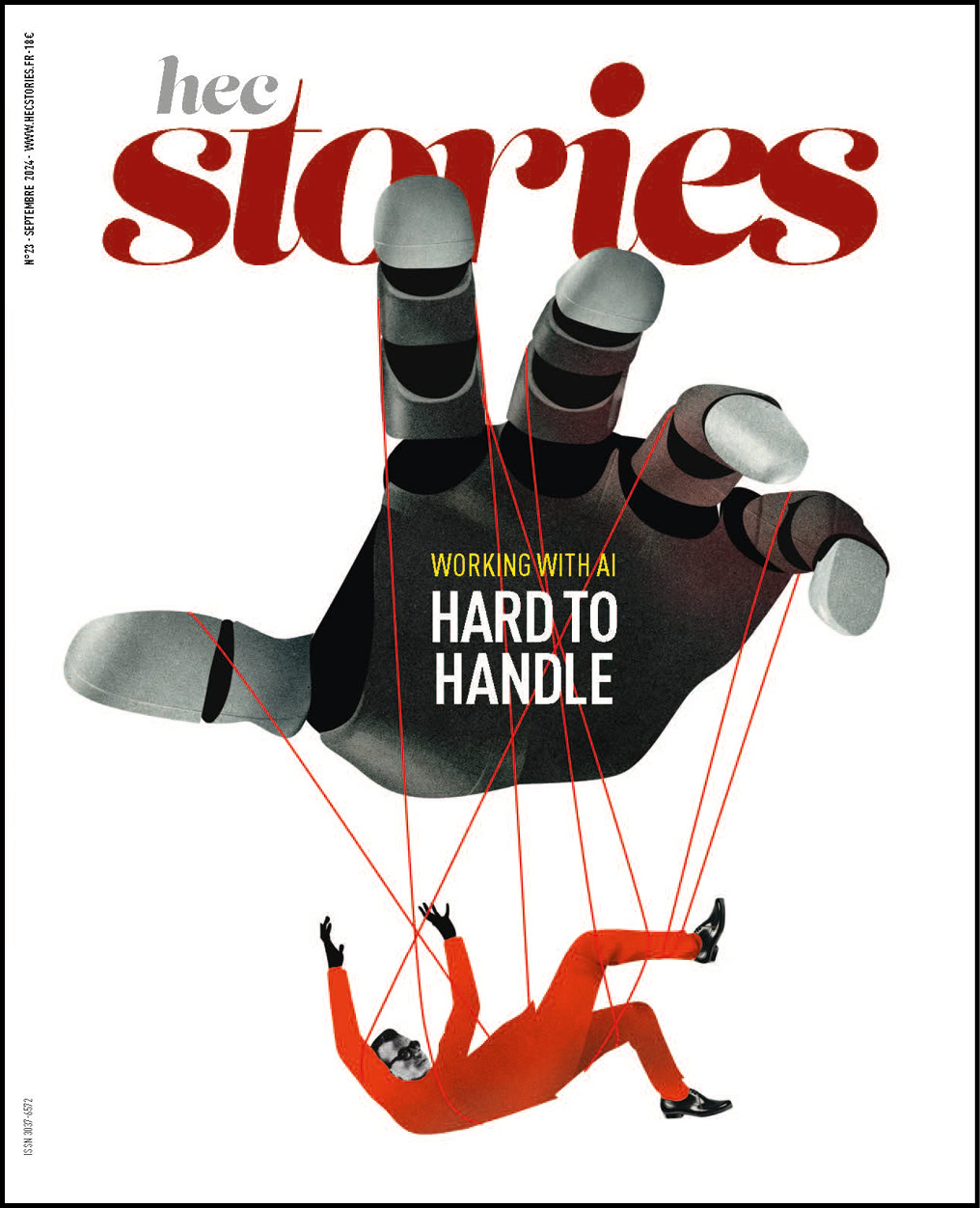Approach artificial intelligence with confidence

To support the digital transformation of companies, Cyrille Comole-Theveniaud (EM.15), General Manager of WooElse has developped a unique methodology based on the power of emotions.
What are the impacts of AI on organizations?
Cyrille Comole-Theveniaud: AI is a technology that both inspires and disturbs. It automates simple tasks, sheds light on phenomena (descriptive AI), anticipates trends (predictive AI), provides recommendations on actions to take (prescriptive AI), and fosters human-machine collaboration (generative AI). For companies, the challenge is twofold: to leverage AI to optimize what they already do, but also to reinvent their business model and explore new opportunities, both internally and with clients, who are seeking augmented experiences and conversations with brands.
And on the human level?
C.C.T.: AI changes the way we interact with clients, but also with teams. Its adoption often faces resistance. The challenge is even greater when as many as six generations might coexist in the workplace. Generation Y is often frustrated by the pace and framework of changes, while Generation X stiffens, fearing loss of control. Without questioning the organizational structure, it’s essential to change the group dynamics and better involve the change agents—those transverse leaders inspired by technology, able to understand, evangelize, and motivate innovation–and put emotions at the center of the paradigm.
How can these resistances be overcome?
C.C.T.: Resistance is often linked to a lack of visibility and the acknowledgment of anxieties. Sometimes, employees don’t know why the technologies are being implemented or how to use them. My approach is to identify the dominant behavior (hostility, disengagement, enthusiasm) and the associated emotion (frustration, fear, fulfillment) in order to propose an action that unlocks the situation. The tool seems too complicated? I focus on education. The objectives are unclear? Then I develop a stratified communication.
What model have you designed to accelerate the adoption of emerging technologies?
C.C.T.: My model has four steps and can be applied to any size of firm and any sector. The first step is the readiness assessment. The goal is to align the perceptions of management and employees and replace fear with inspiration.
The second step is the introduction: this is the critical phase that kickstarts the momentum. One of the keys? Create and empower two multidisciplinary teams to prepare the launch and evangelize.
Phase 3, acceleration, focuses on emotional resilience and motivation through two highly effective tools that I’ve developed: “the perceptual flow and the priority matrix”. Finally, the institutionalization phase supports the project’s integration, emphasizing on celebration and mentoring. The dynamics of transformation are set.
Cyrille Comole-Theveniaud (EM.15)
Cyrille holds three Masters degrees and has a 25-year experience in innovative marketing and digital transformation of major companies such as Dell and Amadeus. In 2017, she launched WooElse Consulting to support companies’ technological shifts.

WooElse
WooElse Consulting helps organisations and their teams propel themselves into tomorrow’s economy. Its unique approach, centred on people, emotions and technology, facilitates the integration of technologies and the transition to new business models while stimulating digital boldness and marketing agility.

Published by La rédaction

